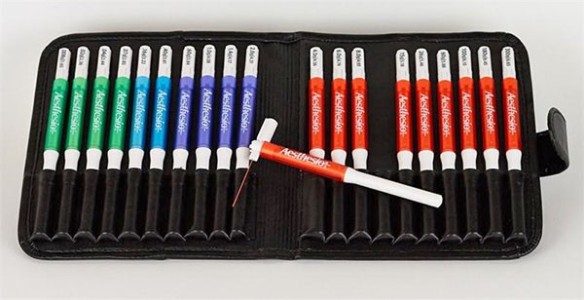Authors
F Joubert, M del Carmen Acosta, J Gallar, Darine Fakih, JAlain Sahel, C Baudouin, L Bodineau, S Mélik Parsadaniantz, A Réaux_Le Goazigo
Lab
INSERM, CNRS, Institut de la Vision, Sorbonne Université, Paris, France
Journal
European Journal of Pain
Abstract
BackgroundOcular surface diseases are among the most frequent ocular pathologies. Ocular pain following corneal injury is frequently observed in clinic. Corneal sensory innervation is supplied by ciliary nerves derived from ophthalmic division of the trigeminal ganglion.
Methods & Results Extracellular activity of the mouse ciliary nerve was first used to investigate the corneal responsiveness to chemical, mechanical and thermal stimulations in order to specifically study the responses of polymodal nociceptors, mechano_nociceptors and cold thermoreceptor in a control cornea. Then, in two models of corneal injury (repeated instillations of 0.02% benzalkonium chloride and corneal scraping), we first measured the corneal sensitivity to chemical (eye_wiping test) and mechanical (von Frey filaments) stimulation. Thereafter, we evaluated whether these corneal injuries modified the spontaneous and chemical stimulation_evoked activity of the ciliary nerve. Both models of injury induced a significant corneal chemical hypersensitivity correlated with an increase of the spontaneous activity of the ciliary nerve and a faster response of the ciliary nerve after a chemical stimulation.
Conclusions Overall, this study provides new insights into the functional aspects of corneal nerve fibre activity in mice after corneal injury. The increase in ciliary nerve activity may thus contribute to the development of ocular pain after corneal damage.
Significance This study highlights the parallel increase in ciliary nerve activity and corneal sensitivity after corneal injury in mice. The strategy of combining ex vivo electrophysiological recordings of the ciliary nerve in mice and corneal sensitivity measurements therefore helps to uncover the functional aspects of corneal pain.
BIOSEB Instruments Used
Von Frey Filaments (Bio-VF-M)
Source :

 Douleur - Allodynie/Hyperalgésie Thermique
Douleur - Allodynie/Hyperalgésie Thermique Douleur - Spontanée - Déficit de Posture
Douleur - Spontanée - Déficit de Posture Douleur - Allodynie/Hyperalgésie Mécanique
Douleur - Allodynie/Hyperalgésie Mécanique Apprentissage/Mémoire - Attention - Addiction
Apprentissage/Mémoire - Attention - Addiction Physiologie & Recherche Respiratoire
Physiologie & Recherche Respiratoire




































 Douleur
Douleur Système Nerveux Central (SNC)
Système Nerveux Central (SNC)  Neurodégénérescence
Neurodégénérescence Système sensoriel
Système sensoriel Système moteur
Système moteur Troubles de l'humeur
Troubles de l'humeur Autres pathologies
Autres pathologies Système musculaire
Système musculaire Articulations
Articulations Métabolisme
Métabolisme Thématiques transversales
Thématiques transversales Congrès & Meetings
Congrès & Meetings 